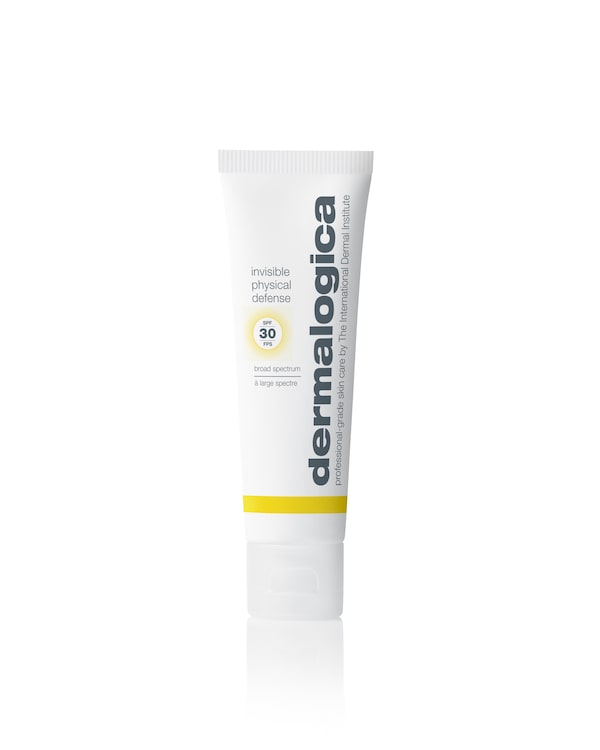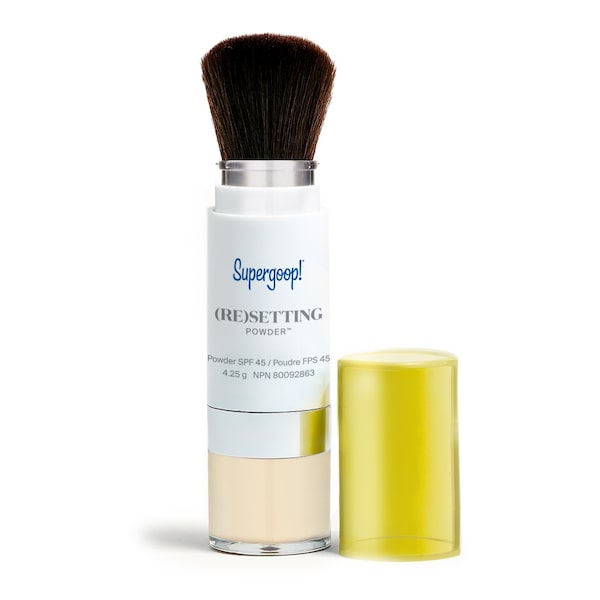Health Canada recommends wearing a broad-spectrum sunscreen that protects from both UVA and UVB light with a sun protection factor of 30 or higher.Getty Images/iStockphoto
Just the scent of sunscreen can conjure up happy memories of simpler summer days. But deciding how to best protect your skin from harmful rays right now is anything but straightforward.
Preventing sun damage is an instance of skin care having real health implications, which is why products making SPF claims are regulated under Canada’s Food and Drugs Act. The latest research from the Canadian Cancer Society projected 1,300 deaths in 2019 from melanoma, the vast majority of which is caused by exposure to UV light. As sun protection evolves, questions have been raised about the overall health effects of some of its regular ingredients, its environmental impact and whether limiting the sun’s rays can cut off our bodies from much-needed vitamin D, leaving some wondering whether they should be lathering up at all.
Personal care products have been under a microscope as concerns about how ingredients can affect a user’s health and the environment arise, and sunscreen is no exception. The active ingredients used in sunscreens generally fall into two categories: chemical sunscreens, which include elements such as avobenzone and oxybenzone, and physical or mineral sunscreens, which look to zinc oxide and titanium dioxide for their SPF. Chemical sunscreens work by absorbing UV rays and converting them into heat that’s released from the body, while mineral sunscreens work by blocking the sun’s rays, reflecting them away from the skin. For both types, Health Canada recommends wearing a broad-spectrum sunscreen that protects from both UVA and UVB light with a sun protection factor of 30 or higher.
While these ingredients have proved their sunscreening abilities, what about the other effects they have on our bodies? In 2019, a study released by the U.S. Food and Drug Administration found that at least one active sunscreen ingredient was absorbed into the bloodstream in significant amounts from each of the four formulas tested. It concluded that more research is required to determine if these ingredients can be recommended as safe and effective.
“I think further data is needed,” says Dr. Jennifer Beecker, a board-certified dermatologist and the national chair of the Canadian Dermatology Association’s Sun Awareness Working Group. Beecker points out that the study didn’t look at an individual’s normal use, which she says is estimated at one bottle of sunscreen a year. Instead, the study’s 24 subjects were tested in maximal-use conditions, meaning two milligrams of sunscreen for each square centimeter was applied to 75 per cent of the body surface area four times daily.
While further research is done, the FDA still recommends continuing to use sunscreen, and that anyone who wants to stay away from chemical sunscreens can use a physical formula.
Chemical sunscreens have been more widely available because their easy application offered a better user experience. But with consumers demanding more natural options, the industry is pivoting. “Big companies that previously were only producing chemical sunscreens now will often have a mineral or a blended product,” says Dr. Kerri Purdy, a board-certified dermatologist, assistant professor at Dalhousie University and the president of the Canadian Dermatology Association.
At her Canadian skin-care company, LaSpa Naturals, Susan Mey uses all-natural ingredients, including zinc oxide, in her sunscreens. “There’s a lot of misinformation that mineral-based sunscreens are not as palatable or cosmetically pleasing as using a chemical sunscreen. The days largely are passed on that,” she says. “You can get higher quality zinc oxides that are thinner and actually spread more evenly so you don’t have that white cast on your skin.”
Beyond concerns of how sunscreen may negatively impact the human body is its influence on fragile ecosystems. Chemical filter oxybenzone has been found to cause coral bleaching, leading the state of Hawaii to pass a bill banning the sale of over-the-counter sunscreens containing oxybenzone. There’s also evidence that these ingredients enter waterways and marine life. All of these concerns have some calling for us to give up sunscreen altogether.
In an article titled “Is Sunscreen the New Margarine?” on the Outside magazine website, author Rowan Jacobsen calls sun protection guidelines into question. He posits that vitamin D, which is produced by the body following sun exposure, has health benefits that far outweigh those of avoiding the sun. “People with low levels of vitamin D in their blood have significantly higher rates of virtually every disease and disorder you can think of: cancer, diabetes, obesity, osteoporosis, heart attack, stroke, depression, cognitive impairment, autoimmune conditions, and more,” he writes.
But according to Beecker, the evidence to ditch SPF just isn’t there. “The risk benefit in 2020 is clearly in favour of using sunscreen,” she says. “When you look at the overall picture from quality of evidence and data and what’s noise and what’s poor quality data and opinion and misinterpretation of data, it’s very clear that sunscreen is one effective measure as part of a sun protection program.”
Beecker stresses that this strategy should include other measures such as covering up with clothing, a hat and sunglasses, staying in the shade when possible and avoiding peak sun hours. “Sunscreen is there to help you when you can’t cover up,” she says.
Sticking with sunscreen is a recommendation shared by Canadian Dermatology Association president Purdy. “Our bottom-line stance is that sun safety is important,” she says. “It’s the only thing you’re able to do to decrease risk of skin cancer.”

Dermalogica Invisible Physical Defense SPF 30, $77.

AlumierMD Clear Shield Broad Spectrum SPF 42 Sunscreen, $48.

Vichy Ideal Soleil Melt-In Lotion Clean Skin Feel SPF 30, $30.

Cody Caissie
Garnier Ombrelle Face Ultra-Light SPF 60, $19.

Handout
Supergoop! (Re)setting 100% Mineral Powder SPF 45 Translucent, $40.
Sign up for the weekly Style newsletter, your guide to fashion, beauty and design, and follow us on Instagram @globestyle.